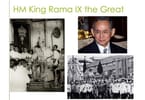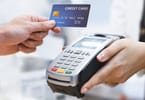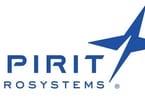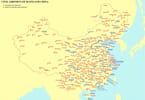A large majority of travel managers polled separately by the Association of Corporate Travel Executives and the National Business Travel Association indicated their companies have not reduced business travel as a result of the Christmas Day attempt to detonate a bomb aboard a Northwest Airlines jet en route to Detroit from Amsterdam. But the byproducts of the terror plan–enhanced security screening and other reactive measures–already are affecting travelers around the world.
The full consequences are not yet clear as authorities in several countries continue to review and enact new rules. Thus far, there is no evidence of a substantial drop in U.S. air travel demand as a result. “The terrorist incident in December has perhaps had some negative impact on ticket sales, particularly to/from Europe,” according to a Jan. 11 research note from UBS analyst Kevin Crissey. “That said, the managements with whom we’ve spoken have not seen any material downtick that they can attribute to the failed attempt.” But the situation raises questions for many frequent travelers and their managers. Will new security procedures that lengthen checkpoint wait times become too much of a drain on traveler productivity? Will carry-on restrictions become less consistent worldwide and force more travelers to wait for checked bags? How should national authorities and corporations that field business travelers handle health and privacy concerns related to the use of body-scanning technologies? How can corporate travel professionals stay on top of new developments?
Some of the impact already is apparent: Passengers on inbound-U.S. flights face additional carry-on bag restrictions (including a Canadian government ban on all carry-on items, with certain exceptions including “personal items”) that have prompted some carriers to waive some checked bag fees. Inbound-U.S. passengers also “may want to allow additional time to get through security,” according to the U.S. Transportation Security Administration, and may encounter additional random searches, including physical pat downs, and more screening at departure gates. Canada’s government suggested U.S.-bound travelers “arrive at the airport three hours in advance of their scheduled flight.” Travelers departing from or transiting through “nations that are state sponsors of terrorism or other countries of interest” in particular will face “enhanced” screening, according to TSA.
For domestic U.S. passengers, “passengers do not need to do anything differently, but they may notice additional security measures at the airport,” according to TSA. Travelers may not see certain other measures, like more air marshals on flights and more names added to the “no-fly” list. Impact On Corporate Travel “As a business traveler, now I have to allow more time and I am going to deal with all sorts of irregularities as I go from country to country, but I still have to travel,” said Bruce McIndoe, president of iJet Intelligent Risk Systems. “The business traveler has to suck it up.” According to ACTE’s poll of 200 travel managers, 92 percent of respondents said there had not been cancellation requests from their companies’ travelers as a result of the attempted attack. Seventy-nine percent said they neither had discussions with their companies’ security directors nor altered travel policies; 19 percent said such discussions were held but no policy changes were enacted; and 2 percent said they had such discussions and made policy changes.
NBTA’s poll of 152 travel managers–which found that 81 percent of respondents said their companies would not reduce travel as a result of the Christmas Day incident–asked respondents if new security directives implemented by TSA had raised “a new level of concern about the convenience or comfort of air travel.” Forty-eight percent said “no”; 36 percent said “yes.” According to NBTA executive director Michael McCormick, “The business travel community is aware that procedural modifications are often required to address security concerns, and new regulations will be expected and adopted so long as corporate travelers can get to where they need to be efficiently and safely.” “The primary actions travel managers are taking right now are engaging in discussions with top-level management and communicating with their companies’ travelers,” added NBTA president Craig Banikowski. But iJet’s McIndoe said that while keeping travelers informed about ever-changing rules and requirements is an appropriate goal, “we work at it 24/7 and it’s incredibly difficult.” From the supplier perspective, McIndoe said airlines face “a customer service issue. They need to reach out to the broader business travel community. They are the ones that should be facilitating passage through the airport for their best clients [by providing elite status that grants them access to priority security lines], and many are.” McIndoe also suggested that ACTE, NBTA and the corporate travel community at large should be more vocal about the direction on aviation security. “They should be saying, ‘We are ultimately the ones paying the bills for all this stuff. Are we spending money wisely around some of these issues?’ ” he said. “People are losing faith in the system when they see egregious failures 10 years on from 2001.” Full-Body Scanning For example, McIndoe recommended that TSA and U.S. Customs and Border Protection ensure they are buying and deploying the latest technology (rather than body scanners that would not have detected the explosive carried onto the Northwest jet on Christmas Day) and using it in “a thoughtful,” targeted manner. “I am a proponent for security profiling for travelers,” McIndoe said, “but based on factors that don’t have to be racial, ethnic and religious. [The alleged Christmas Day attacker] paid cash, wasn’t carrying any luggage, [initially] came from an airport with less security capability, etc.–all the factors that should have said, ‘send this guy to line one.’ But I don’t see any of that conversation going on. Instead, I see [TSA] buying a bunch of equipment to placate a perception rather than truly strengthening security at the airport.”
Falling broadly into the category of full-body scanners (or whole-body imaging), such equipment is meant to detect dangerous items and substances that otherwise would not be uncovered by familiar metal detectors. In the United States, TSA is promoting use of two types of full-body scanners: “millimeter wave technology” that uses “low-level” radio waves and “backscatter technology” that uses “low-level” X-rays, according to TSA.
Dozens of such devices already are used in 19 U.S. airports, according to TSA. But despite an option for most travelers to undergo a physical pat down rather than pass through the body scanners, the technology has drawn considerable criticism related to privacy infringement and some questions about health concerns stemming from exposure to X-rays and other radiation.
“We should be focusing on evidence-based, targeted and narrowly tailored investigations based on individualized suspicion, which would be both more consistent with our values and more effective than diverting resources to a system of mass suspicion,” according to a Jan. 4 statement attributed to American Civil Liberties Union national security policy counsel Michael German. Citing “security experts,” German added that the explosive used on Christmas Day “would not have been detected by the body scanners. We shouldn’t complacently surrender our rights for a false sense of security, and we should be very leery of being sold a device presented as a cure-all, especially when the evidence shows just the opposite.”
Some frequent travelers commenting on such message boards as FlyerTalk, as well as a handful of media reports, have cited unease about the potential health impact. According to TSA’s Web site, “the energy projected by millimeter wave technology is 10,000 times less than a cell phone transmission. Backscatter technology uses low-level X-ray, and a single scan is the equivalent of two minutes of flying on an airplane.”
The American College of Radiology this month stated that “an airline passenger flying cross-country is exposed to more radiation from the flight than from screening by one of these devices. ACR is not aware of any evidence that either of the scanning technologies that TSA is considering would present significant biological effects for passengers screened.” Though he said that “there is no definitive science” proving that full-body scanners are completely safe or in any way unsafe, iJet’s McIndoe said, “The bottom line is that nobody travels enough that they are going to get the levels of exposure in their lifetime that [would be harmful]. Companies will look at the government as having the responsibility for any health warnings that are appropriate around these systems, related to pacemakers, or anything that can be harmed, like film passing through X-ray machines. Companies will not look at this as their responsibility.”
ACTE, NBTA and the Air Line Pilots Association did not respond to requests for information about whether they had investigated the possible health impact on frequent travelers of body scanners. According to ACTE, 62 percent of respondents said they believe that full-body scanners would “somewhat improve” air travel security, with another 28 percent saying they believe the devices would “greatly improve” security. When asked if their companies’ travelers object to full-body scanning, 13 percent replied “yes” and 53 percent said “some would.” Sixteen percent said “no,” with the rest unsure. More Screening Devices Coming According to a 2008 posting to TSA’s blog, images generated by full-body scanners “are friendly enough to post in a preschool. Heck, it could even make the cover of Reader’s Digest and not offend anybody.” Moreover, personnel viewing images produced by the body scanners “never see the passenger,” according to TSA’s Web site. The devices “blur all facial features” and “cannot store, print, transmit or save the image.” TSA also noted that “over 98 percent of passengers who encounter this technology during TSA pilots prefer it over other screening options.” Seventy-eight percent of U.S. adults participating in a Jan. 5-6 USA Today/Gallup poll said they approve use of full-body scanners.
The Los Angeles Business Travel Association called for “widespread use of full-body scanning technology at airports throughout the world,” saying such deployment “likely will speed the security process by eliminating the need to empty one’s pockets.” In the United States, the scanners serve as primary screeners at airports in Albuquerque, N.M., Las Vegas, Miami, Salt Lake City, San Francisco and Tulsa, Okla., and “secondary, or random screening, as an alternative to a pat down at 13 airports,” according to TSA’s Web site.
TSA–still without a leader as the U.S. Congress considers President Barack Obama’s nominee, Erroll Southers–“plans to deploy at least 300 additional units in 2010,” according to the U.S. Department of Homeland Security. That’s part of what Obama last week described as a “$1 billion” investment in aviation security, also including more baggage-screening technologies and other explosive-detection enhancements.
The U.S. Senate Homeland Security and Governmental Affairs Committee on Jan. 20 plans to convene a hearing on aviation security. “Why aren’t airline passengers flying into the U.S. checked against the broadest terrorist database, and why isn’t whole-body scanning technology that can detect explosives in wider use?” asked committee chairman Joe Lieberman, ID-Conn., in a prepared statement.
Elsewhere, Canada Transport Minister John Baird said full-body scanners would be installed “at major Canadian airports” this month, according to a prepared statement. The Canadian government also “will soon issue a request for proposals for passenger-behavior observation for passenger screening (focusing on passengers exhibiting suspicious behavior) at major Canadian airports.”
According to published reports, Britain also will deploy body scanners. Interior minister Alan Johnson told Parliament that the devices would be deployed at London Heathrow Airport before the end of the month and then “introduced more widely,” according to Reuters.
French President Nicolas Sarkozy, meanwhile, “has ordered a study of the possible use of full-body scanners at French airports” according to the Associated Press. In the Netherlands, “the Minister of Justice had decided … to immediately deploy the body scanner in security procedures at Schiphol [Airport in Amsterdam] on flights to the United States,” according to a government statement. In addition to new measures already in place, DHS Secretary Janet Napolitano announced a partnership between DHS and the U.S. Department of Energy “to develop new and more effective technologies to deter and disrupt known threats and proactively anticipate and protect against new ways by which terrorists could seek to board an aircraft.”
Napolitano this month will go to Spain and Switzerland to meet with her European counterparts and aviation industry leaders “in the first of a series of global meetings intended to bring about broad consensus on new international aviation security standards and procedures,” according to DHS.
Napolitano also dispatched other DHS senior officials “on a broad international outreach effort to meet with leaders from major international airports in Africa, Asia, Europe, the Middle East and South America to review security procedures and technology being used to screen passengers on U.S.-bound flights.”






















